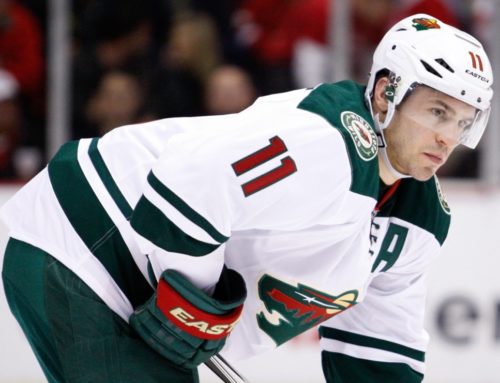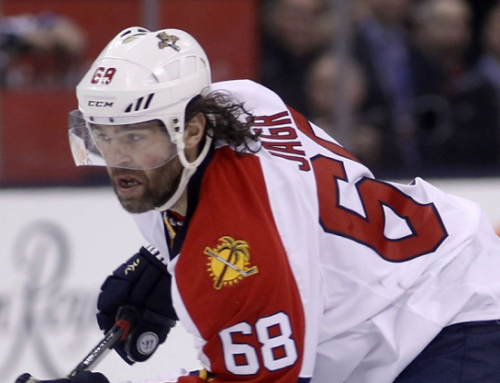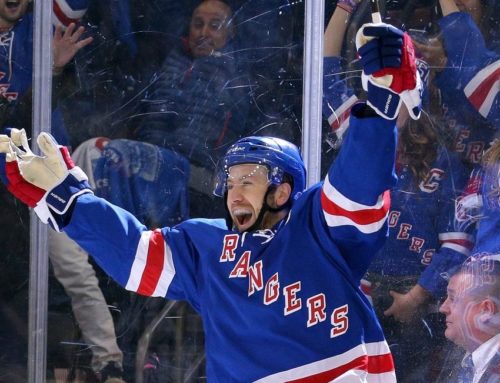
How can we quantify the number of "man games lost" from season to season?
When I started to craft this week’s article in my mind, I had a vision of collecting data on the number of man games lost due to injury.
Recently, we heard about Connor McDavid’s issue with being pulled out of a game because of the NHL’s concussion protocols and of Jack Eichel’s ankle pain. Was the NHL trending upward, downward, or holding steady? And, if trending upward what is the source of the trend?
As for the culprit, I wanted to say that it was because the physical demands asked of the players is too great.
In this article found on the Toronto Sun Jim Nill, GM of the Dallas Stars, says “Every night’s a playoff game. There was one coach at the start of the season who was asked: 'When do you think you have to start getting ready for the playoffs?' Well, the playoffs start on Day 1 of the regular season now. I think that’s great for the fans, great for the league.”
Gone are the days where the regular season was about entertaining us. Now every game, every minute, every action, every comment has to have a meaning and purpose towards getting into the playoffs.
Take for example the mid-period interview with the coach on the bench. Do we really get anything out of it? It is done for us to get a feel for the struggle that our team is facing in their quest to reach the post season. How absurd.
My position would be that players are getting hurt more now because they are run down. If you were asked to work every day like a deadline was looming over you I believe that you too would be more susceptible to becoming ill or hurt.
That would be my stance provided that I could back it up with data.
I discovered a site called Man Games Lost, but it requires that you pay to access historical information. I cannot blame them for trying to earn a living, but based on a drop-down menu option, they only collected this type of information from 2009 onward.
NHL top 5, impact of man-games lost (by IIT-skater metric)
1 WPG
2 BUF
3 DET
4 BOS
5 TBLhttps://t.co/rSoNYbm4YH— Man-Games Lost NHL (@ManGamesLostNHL) December 10, 2016
After some more digging I did find some data.
|
Season |
Man Games Lost |
Link |
Note |
|
2015-16 |
7714 |
|
|
|
2014-15 |
7252 |
*Projection on 60-game totals **Columbus Dispatch graphic |
|
|
2013-14 |
7687 |
|
|
|
2012-13 |
4339 |
Short season (48 games per team) |
|
|
2011-12 |
8317 |
||
|
2010-11 |
8099 |
||
|
2009-10 |
7096 |
|
|
|
2008-09 |
8136 |
|
|
|
2005-06 |
6738 |
***Projection (Rangers, Blue Jackets and Senators not in original data) |
While these are the limited numbers that I could collect, there is the issue of how to calculate what is a man game lost.
When a player is injured is not in question, but would they necessarily be a starter? That makes things more difficult.
It trend looks like it is holding steady, but without more data I cannot be certain. Still 7000 to 8000 games are a lot to be missed by NHL starters.
That is when I decided to twist the problem around. How many man games are there?
Everyone talks about it like we really know what the value is but I have not seen it anywhere.
Start with the number of players that can play in a single game, 18 skaters and 2 goalies for each team, equals 600 players. Multiply by 82 games per team.
For my purposes, I have excluded the goalies, so the total number of man games possible is 44,280. That is if every skater played every game with no benching, demotions or injuries.
|
Season |
Man Games Lost |
% of Total Games |
|
2015-16 |
7714 |
17.4 |
|
2014-15 |
7252 |
16.4 |
|
2013-14 |
7687 |
17.4 |
|
2012-13 |
4339 |
16.7 |
|
2011-12 |
8317 |
18.8 |
|
2010-11 |
8099 |
18.3 |
|
2009-10 |
7096 |
16.0 |
|
2008-09 |
8136 |
18.4 |
|
2005-06 |
6738 |
15.2 |
The data that I could collect, comes back and says that somewhere between 16 to 18 percent of all games are lost in the seasons. There has to be another way to find this kind of information for prior seasons.
I know the number of players that played one or more games in each season and I know the number of games each of them have played. While that does not tell me how many games were lost, it does tell me what the average number of games would be and what ranges players fall into.
My calculations were from 1974 through to the current season.
- Around 870 skaters play at least one game in every season since the league stabilized to 30 teams at the start of 2000-01. This includes the shortened 2012-13 season where you would have thought that fewer players would be required, but they ran through 839 that year.
- A grand total of 916 were needed in the 2003-04 season.
- During this period a skater averaged playing in 61% of all team games. That is approximately 50 games played.
- From 1991 to 2000, when the league went through various stages of expansion the numbers did not differ much. Approximately 60% of team games (49) were played by each player.
- The shortened season of 1994-95, did show a higher percentage (63%) but it was nothing abnormal to what was seen in some other seasons.
- Surprisingly, when the league only had 21 teams (1979 to 1991) the average was as low as 56% and as high as 62%
- From 1974 to 1979, the average number of team games played was higher though. It ranged between 66% to 68%.
One difference could explain the increased percentage of team games played is that at the start of the 1982 season game roster sizes were increased to include 18 skaters and two goalies (total of 20 players). The previous roster limits were set at 17 skaters and two goalies, total of 19.
I would have thought that if there were fewer man games lost, then the average number of games played by a skater would have been dramatically better. Surely there were fewer games lost back in the 70’s and 80’s, right?
The data from that same large period of time was broken down into segments of 10 game blocks.
- 30% to 35% have a night cap (73 games or more)
- 13% to 16% have a late supper (up to 72 games)
- Nine to 11% eat dinner at a normal time (as much as 62 games)
- Seven percent have a midday snack (52 games)
- Another six percent stay for lunch (42 games)
- Five to seven percent get to eat Sunday brunch (32 games)
- Another six to eight percent have a full breakfast with the club (22 games)
- About 12% to 14% are provided with a bagel or donuts with their coffee (12 games played)
- Six to eight percent of all skaters are called up only for a cup a coffee (one or two games played)
There were no huge peaks or valleys across seasons.
What we really want is to identify the man games lost to skaters who would be normally in the top six forwards or in the top four defensemen. Not that the other players are useless to the team, but they are not what we fantasy leaguers are interested as much in.
Now talk about a challenge. Trying to collect this information is very subjective. I can already see scenarios where top nine forwards of some teams are better than the top six forwards on others.
My article looked to have taken a kill shot and I would have to start looking at something else.
Then I read an article by Jed Ortmeyer regarding his diagnosis and continued wanting to play hockey even though he was diagnosed with having a condition that make him prone to blood clots.
The most striking thing he wrote I found was this little segment:
Doctor – “You just pulled two clots through your heart. I really have no idea how you’re even alive.”
Ortmeyer – “O.K. … but if I were to keep playing—”
Doctor – “Your career is over, Jed. Unless you want to die on the ice.”
Ortmeyer continued to play until he found out that he was going to be a father. It was at that point in time it struck him how silly it was to risk his life continuing to play hockey.
We worry about the number of man games lost, but what really is being done to reduce the number? What is it in a player’s mind that makes him want to risk further injury?
Most injuries or illnesses will not kill a player, but some can have long term effects to the quality of their lives after their careers are over.
As much as a Connor McDavid fantasy owner hated him getting pulled out of the lineup to get checked for a concussion, it was the right thing to do for the player, even if McDavid did not see the need for it at the time.
Want to reduce the possibilities for concussions?
Make it mandatory that helmets be worn with full face shields or cages. That little chin protector that is part of that system would have prevented McDavid chin from smacking the ice and the concussion spotter would not have had any inkling to remove him from the game.
Common arguments against wearing a face shield include that it is not manly, advertisers/fans cannot see players faces and players find them too confining or restrictive.
One day in the near future, insurance companies will insist on it happening unless players sign a release just like Ortmeyer had to do so he could continue to play hockey.
No one would like it, but it will happen if one too many men are taken down by long-term injuries.





 FLA
FLA CHI
CHI NYR
NYR PIT
PIT L.A
L.A COL
COL BUF
BUF UTA
UTA STL
STL PHI
PHI VAN
VAN CBJ
CBJ
